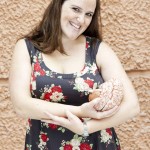One of the mantras from our training in paediatrics was that “children are not small adults”. By this they meant to remind us that we cannot make a direct transfer of what we know about diagnostics and treatment of adults to children, and assume it will be successful.
Our findings show how important it is to do research on different age groups, also within basic research. What works in adults could be potentially harmful in children and newborns, and what does not work in adults could turn out to be a valuable therapy.
This is something I that have experienced through my research, where we have looked at how the brain of seven days old rats work after an episode of blood and oxygen deprivation, also known as hypoxic-ischaemic (HI) brain damage.
HI brain damage during pregnancy or birth is one of the causes of cerebral palsy (CP). We found that the newborn brain cells work very differently from what we know about adult rat brains.
Oxidative stress is one of the mechanisms that damage brain cells when there is a lack of blood and oxygen. A process called the pentose phosphate pathway [1] plays an important role in the defence against oxidative stress by producing substances that are used to renew the body’s own antioxidants. Due to this, the antioxidants can be used again and again to neutralise oxygen radicals.
This could make the newborn brain especially vulnerable to oxidative stress.
In adults the activity of the pentose phosphate pathway increases during oxidative stress [2,3], which probably acts as a defence mechanism in the adult brain. To our surprise, we found that in newborns, however, the activity of the pentose phosphate pathway is reduced after an episode of blood and oxygen deprivation. This could make the newborn brain especially vulnerable to oxidative stress.
Another mechanism that damages the brain cells when there is a lack of blood and oxygen in the brain, is uncontrolled firing of the neurons which releases large quantities of the signalling substance glutamate. Such uncontrolled firing occurs when the neurons have too little energy, and is therefore common during HI when the lack of nutrients and oxygen causes an energy-crisis.
Glutamate in large quantities is poisonous to the brain cells. In adults the formation of glutamate is reduced during and after and HI episode [4,5]. In newborns the production is also reduced in the phase after HI, but with one important difference: Compared with other processes, the production of glutamate is actually prioritised over for example energy-production! This could be a contributing factor to the brain cells not being able to optimise the energy levels, with the result that this new glutamate is released and damages the surrounding brain cells.
Both oxidative stress and high doses of glutamate can lead to cell death even after the cells have regained sufficient blood supply. This means that brain cells are still being damaged at a stage when it may be possible to offer treatment. It is believed that much of the damage in the newborn brain happens after the blood supply has been restored. If we could give effective treatment at this stage, much of this damage could possibly be avoided.
These are two examples of how the brain seems to function differently in newborn and adult rats.
These are two examples of how the brain seems to function differently in newborn and adult rats. If the same differences exist between newborn and adult humans, this could lead us onto new ways of treating newborns that have experienced episodes of too little blood or oxygen to the brain during a difficult pregnancy or a complicated birth.
Our findings show how important it is to do research on different age groups, also within basic research. What works in adults could be potentially harmful in children and newborns, and what does not work in adults could turn out to be a valuable therapy.
This blog post is based on the paper “The Pentose Phosphate Pathway and Pyruvate Carboxylation after Neonatal Hypoxic-Ischemic Brain Injury”, which was recently published in the Journal of Cerebral Blood Flow and Metabolism: http://www.nature.com/jcbfm/journal/vaop/ncurrent/full/jcbfm20148a.html
Links:
[1] The Pentose Phosphate Pathway: http://en.wikipedia.org/wiki/Pentose_phosphate_pathway
[2] Bartnik BL, J Neurotrauma 2005: http://www.ncbi.nlm.nih.gov/pubmed/16238483
[3] Domańska-Janik K., Resuscitation 1988: http://www.ncbi.nlm.nih.gov/pubmed/2839885
[4] Håberg A, Neurochem Int 2006: http://www.ncbi.nlm.nih.gov/pubmed/16504342
[5] Håberg A, JCBFM 2001: http://www.ncbi.nlm.nih.gov/pubmed/11740207


